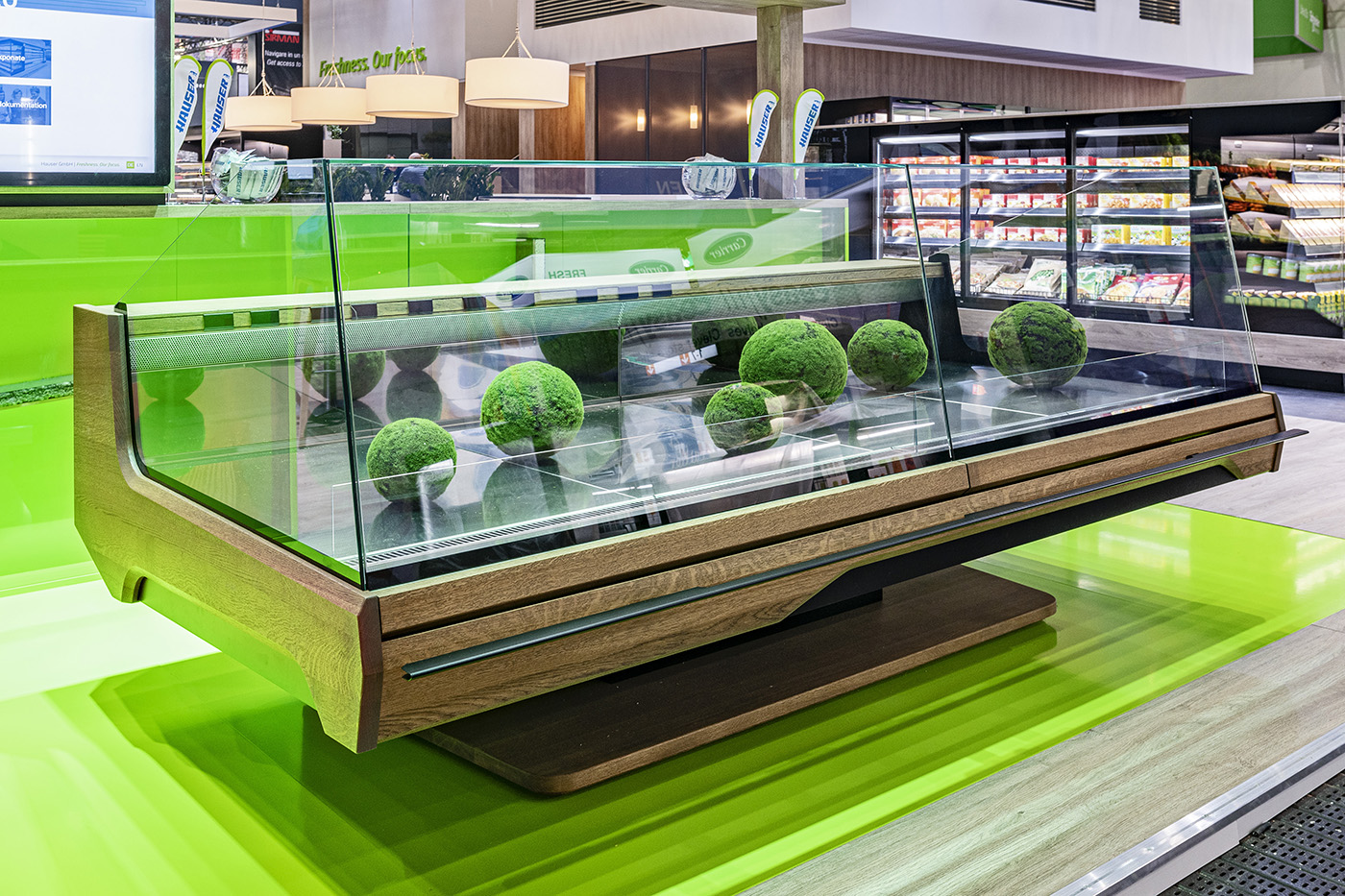The magazine FRISCHELOGISTIK published in its issue 06/2020 an extensive specialist article about the HAUSER greenTHEK, whose prototype had been presented successfully on this year's EuroShop. Here you can find the article in the specialist journal for the fresh and frozen food chain.
Ecology and sustainability are becoming more and more important, including when it comes to refrigeration units and cooling technology. The use of CO2 as a natural refrigerant is an important step in the right direction. But there are other innovative approaches to making refrigeration units more environmentally-friendly and more recyclable. The “greenThek” development project illustrates these possibilities.
Conventional refrigeration units are only partially recyclable due to their mix of materials, which includes steel, PU foams, plastic and glass. As a result, there is a clear need to develop alternative concepts that harness greater ecological benefits and produce less CO2 over their entire lifecycle. To promote market acceptance of a sustainable refrigeration unit, cooling specialist Hauser commissioned a market study of the trending topics of sustainability and ecology in the refrigeration industry. At the same time, the University of Natural Resources and Life Sciences, Vienna carried out a feasibility study. The technical viability of the concept was confirmed by the production of an ecologically designed refrigeration unit, albeit at greater cost than conventional construction methods.
Suitable natural materials
The project team was confronted with two major challenges when constructing the “green” refrigeration units. Firstly, the traditional steel substructure had to be completely replaced with wood, whilst maintaining important factors such as high stability, an attractive design and practical handling. The second major task was to select suitable natural insulating materials that are as effective as conventional polyurethane foam. Various natural materials were considered, from sheep’s wool, wood and hemp to geolyth. In the end, the latter two were chosen because they demonstrated the best insulating properties.
Concept of a "green" refrigeration unit
The development of the sustainable refrigeration unit was launched in close cooperation with partners – including the University of Natural Resources and Life Sciences, Vienna, Graz University of Technology, and the Innovation Centre W.E.I.Z., among others. This ensured the availability of various skills and interdisciplinary collaboration. Wood was selected as a basic material because it offers the benefits of being strong yet lightweight, easy to work with and ideal for recycling, making it extremely versatile. It is also particularly environmentally friendly because it stores CO2 as it grows and locks it in for its entire lifecycle.
Sustainable materials
The carbon-neutral material wood replaces steel not only in the substructure, but also in the well construction and the front and side cladding. The individual parts become closely connected. Instead of the conventional polyurethane foam, natural insulating materials like GEOLYTH or hemp are used. The front and side cladding is made from oiled solid wood. Different designs and variants are possible depending on the (regional) type of wood, surface treatment and shop fitting concept. The well has a sandwich construction, with wood on the outside, natural insulation in the middle and stainless steel for the inner side. This means that like the standard version, the cabinet is suitable for all unpackaged food items. The glass cover and the sophisticated cooling technology, which uses CO2 as a natural refrigerant, are constructed in the conventional manner.
Same performance, lower environmental impactA comparison of the handling, capacity and energy consumption essentially shows no difference between the greenTHEK and a conventional cabinet. However, it is important to note that the thickness of the insulating material has to be increased from around 40 mm for a traditional refrigeration unit to around 55 mm for the “green” variant with natural insulation. The cabinet made of wood and wood materials is up to 100 per cent recyclable because the individual modules can be separated into their single-material components. The reclaimed materials can then be used as raw materials for new products. Once the wood can no longer be used for other purposes, it can be burnt as fuel to generate heat. The “green” refrigeration unit is estimated to save around 20 to 30 per cent CO2 (or 110 kg CO2 per linear metre) compared with a traditionally manufactured unit.
Trade fair surveyDuring EuroShop 2020, a survey was conducted on the practicality of a “green” refrigeration unit. The results showed that customers rate the properties of refrigeration units as follows (from highest to lowest):
1. Ease of handling for staff 2. Design 3. Ecology 4.Construction 5. Modular structure. The results show that customers are interested in the concept of an environmentally-friendly refrigeration unit, but ecology is not yet at the top of their list. Being simple for staff to operate and having an appealing design remain the most important factors when deciding how to invest. That said, the trend towards sustainability and ecology is gaining more and more momentum, including in the food trade, so there is stronger demand for environmentally-friendly refrigeration. The increasing number of organic supermarkets is clear evidence of the direction the sector is taking.
Authors:
Andreas Schauer, Director Technical Development
Andreas Schauer completed his apprenticeship with HAUSER and has since acquired 25 years of experience in cooling technology. Today he is responsible for the technical specialists in the Technical Development division, where innovative refrigeration units and cooling technology systems are developed and tested.
Peter Breitenfellner, Director Sales International
Peter Breitenfellner has worked at HAUSER for more than 20 years. As Director of Sales International, he brings experience and expertise in sales, guiding customers from procurement and planning through to assembly and after-sales service.


